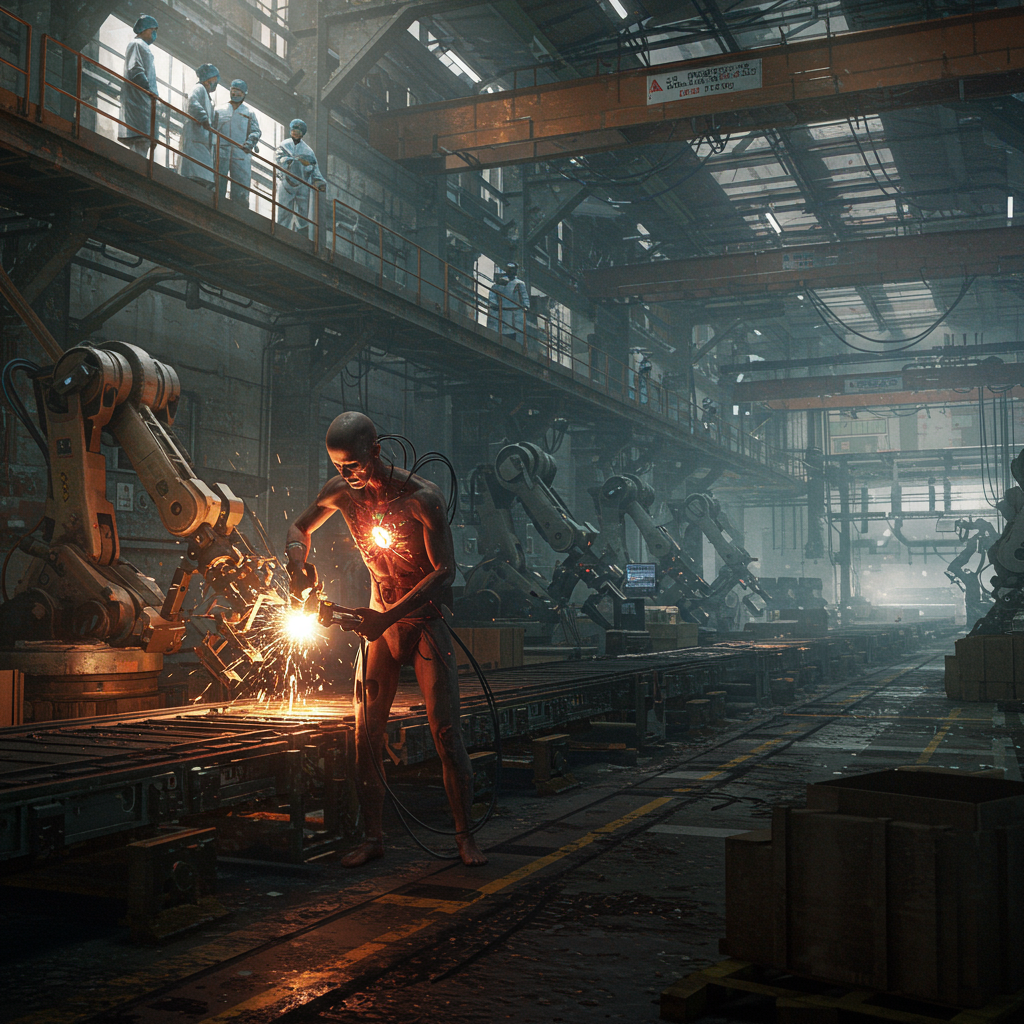
Someone dropped this quote recently, and it really stuck: "There’s a big difference between a factory job where you command the robot and one where you are the robot." It hits hard, right? Especially now, with AI weaving itself into pretty much everything we do.
It’s easy to see the scary side, the potential for jobs to become hyper-optimized checklists where *we* are just executing tasks dictated by an algorithm. Think about those warehouse pickers timed down to the second by software, or customer service reps following rigid scripts generated on the fly by AI. That feels a lot like ‘being the robot’ – efficient maybe, but draining, repetitive, and stripping away the human element, the judgment calls, the creative problem-solving.
But here’s the thing, especially for those of us looking for ways to work smarter and grow: that's not the *only* path. The other side of that quote – commanding the robot – is where the real opportunity lies. And that’s exactly what we talk about here: using AI as a tool, as leverage, as a way to amplify *your* skills, not replace them.
So, what does ‘commanding the robot’ actually look like with today's AI? It’s less about physical robots (usually) and more about directing AI software.
Think about it:
- Instead of manually sifting through hundreds of customer feedback forms, you use an AI tool to summarize the key themes and sentiment overnight. You command the AI to do the grunt work, freeing you up to actually strategize based on the insights.
- Stuck on drafting a tricky email or a marketing blurb? You bounce ideas off ChatGPT, asking it for different angles, tones, or structures. It’s like having an incredibly fast, tireless brainstorming partner. You're directing the creative process, using AI output as raw material, not the final word.
- Need visuals for a presentation fast? You use an AI image generator with specific prompts to create exactly the kind of illustration you need in minutes, rather than spending an hour scrolling through stock photos that are *almost* right. You are the art director, guiding the AI's creation.
- Overwhelmed by meeting notes? Use an AI transcription and summarization tool. It captures the details, you focus on the conversation and the key takeaways. You command the AI to handle the note-taking, improving your presence and follow-up.
See the pattern? In each case, you're not just executing a task. You're identifying a need, choosing the right AI tool, and directing it to achieve a specific outcome that helps *you* do *your* job better, faster, or more creatively. You’re offloading the repetitive, the time-consuming, the stuff that drains your energy, so you can focus on higher-level thinking, strategy, and the uniquely human skills that AI (currently) can't replicate.
This isn't about some far-off future; these are practical AI hacks you can implement *now*. It’s a conscious choice. Are you going to let technology dictate your workflow until you feel like a cog? Or are you going to actively find ways to grab the controls and make AI work *for* you?
Being the commander means staying curious, experimenting with new tools, and constantly asking: "How can this technology help me achieve my goals, rather than just adding another task to my list?" That's how you use AI for genuine growth, staying firmly in the driver's seat.
0 comments:
Post a Comment